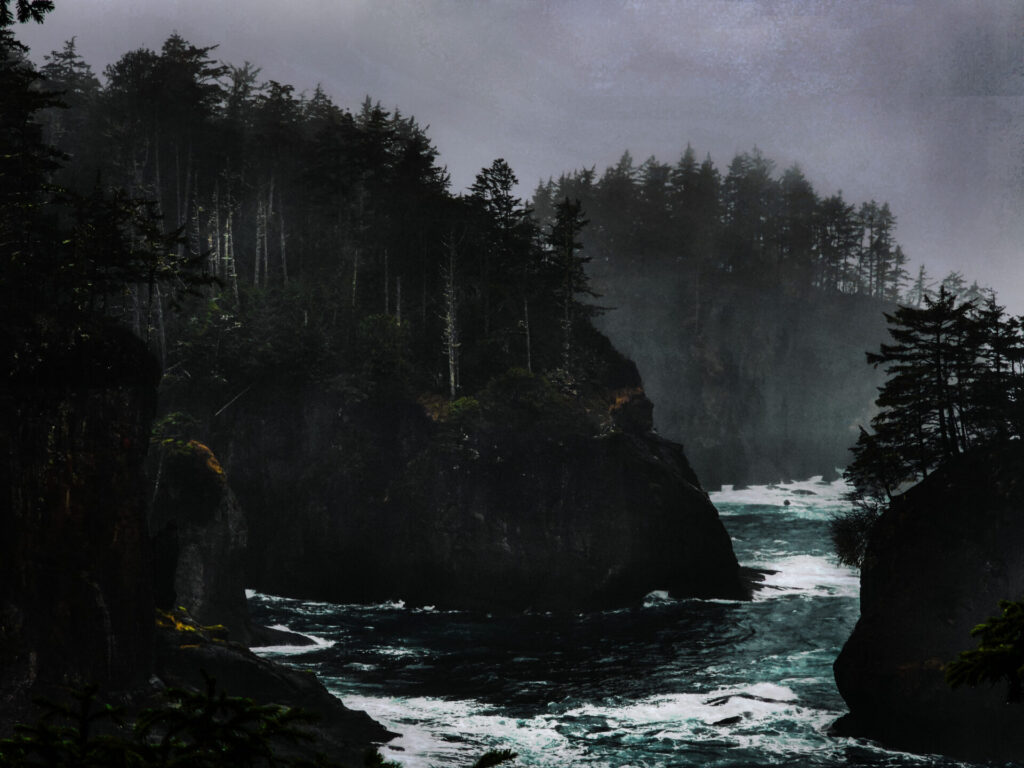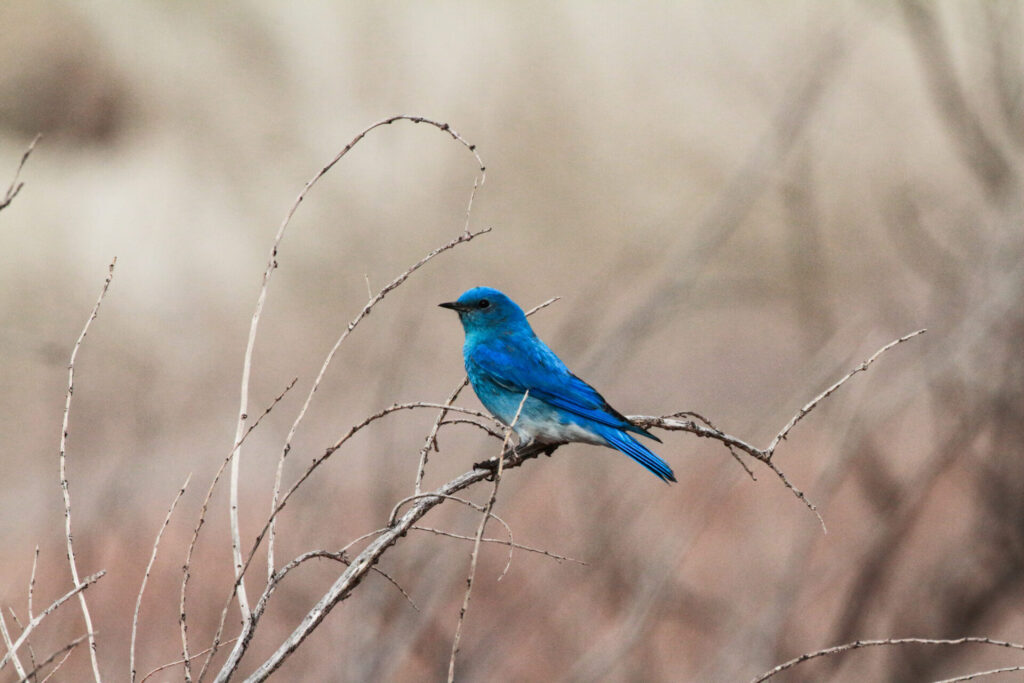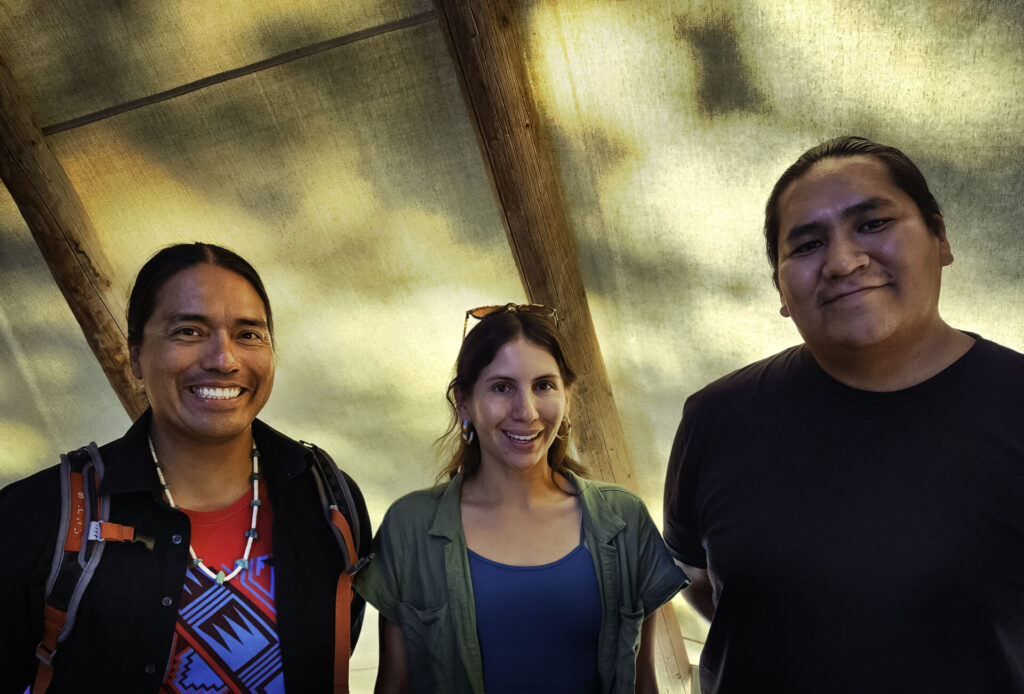- Home
- >
- Preservation Archaeology Blog
- >
- Indigenous Sustainability and “Little Elders...
 (August 29, 2023)—Yá’át’ééh shik’éí dóó shidine’é. Shí éí Caitlynn Mayhew yinishyé. Kin Łichii’nii nishłį́ dóó Bilagáana bashishchiin. Táchii’nii dashicheii dóó Bilagáana dashinalí. K’aabiizhii Nasdlah déé’ naashá. Ákót’éego asdzáán nishłį́.
(August 29, 2023)—Yá’át’ééh shik’éí dóó shidine’é. Shí éí Caitlynn Mayhew yinishyé. Kin Łichii’nii nishłį́ dóó Bilagáana bashishchiin. Táchii’nii dashicheii dóó Bilagáana dashinalí. K’aabiizhii Nasdlah déé’ naashá. Ákót’éego asdzáán nishłį́.
Hello everyone! My name is Caitlynn Mayhew, and I’m a new member of the Archaeology Southwest and cyberSW team. I’m excited to join the group as the Native American Fellow. I would like to share a bit more about myself and my first few weeks with Archaeology Southwest.
I’m Diné from Cove, Arizona—a community that is unofficially known as the “place of widows” due to the devastation of the uranium industry. My community remains haunted by the ghost of the nuclear age and grieves the loss of miners and their families, but I fight to turn tragedy into a rebirth. I fortify my identity with a need to protect my culture and the land of my ancestors. In honor of my community, I remind myself that I must walk the path of life with intent.
On my journey along this path, I reflect and revere all that is around me. I’ve been lucky enough to see—the warm sienna of the Colorado Plateau, the rosy skyline of the Sandias in Albuquerque, to the kaitoke sea of the Olympics, and currently the golden Valley of the Sun. I’ve had the honor of being a guest on the traditional homelands of the Tuf Shur Tia (Sandia Pueblo), the dxʷsəq̓ʷəb (Suquamish), Nux Sklai Yem (Port Gamble S’Klallam), and now the Tohono O’odham, Akimel O’Odham (Pima), and Pee Posh (Maricopa) Indigenous communities. These travels have strengthened my dedication to sustainable Indigenous nation-building, specifically in the field of wildlife biology and conservation.

My past work includes a working field guide for birds of Dinétah, the traditional territory of the Diné (Navajo), which is written in both Diné Bizaad (Navajo language) and English. This research is a continuous and ever-growing project to support Indigenous language and cultural revitalization through a user-friendly and interactive medium. I’m eager to strengthen these skills with the cyberSW team and to support the voice of Indigenous peoples in increasingly diversified disciplines.

It is important to note that the relationship between Indigenous peoples and archaeologists remains quite delicate. Indigenous peoples are still fighting to reclaim stolen artifacts and to protect sacred sites. In response to a history of suspicion and exploitation, modern archaeology has made progress to become more respectful toward and conscious of Indigenous peoples, ancestral possessions, and venerated sites. In my first few weeks with cyberSW, I had the honor of joining some of the Indigenous members of Archaeology Southwest on their trip to the Bears Ears Summer Gathering. What a unique training and bonding experience—two days of camping in Bears Ears, sharing stories and experiences on sacred land.

The Indigenous Conservation Strategies meeting was a highlight of the Bears Ears Summit. I found myself, once again, honored to be a guest in attendance and to be in the field—not an office or federal building—but a guest to the land. During this workshop, members of each Indigenous nation in attendance had the opportunity to meet with Indigenous grassroots movement members, advocates, and Tribal Officials, such as the Fallon Paiute Shoshone Tribe’s chairwoman, Catherine Williams-Tuni.
The focus of this meeting was to share and discuss success stories of conservation strategies for ancestral lands, sacred spaces, how best to navigate protection, and the complexity of land restoration—but this strategy meeting added to the foundation toward profound progress. Not every movement will share the same success as Avi Kwa Ame National Monument or the co-management of Bears Ears National Monument—but each opportunity offers valued support, communication, and collaboration toward shared values. If you haven’t heard of the aforementioned monuments and the movements behind them, I strongly encourage you to take a few moments and read into the story and people involved.
So, how does this all tie back into archaeology and more specifically, my position? Well, I would like to introduce the “little elder” of the Fallon Paiute Shoshone Tribe, the Dixie Valley Toad. Recently, the Fallon Paiute Shoshone Tribe of Southern Nevada went head-to-head with the Bureau of Land Management to stop the construction of a geothermal power plant on a sacred site. The Dixie Meadows contains a unique wetland fed by hot springs, and the Fallon Paiute Shoshone Tribe revere the hot springs. The imposing geothermal plant would have a devastating effect on the hot springs and surrounding wetlands. In addition, the Tribe would lose access to their sacred spring—a loss as devastating as losing a home, an identity, and a loved one. In the end, it took the voice of the smallest community member, the mighty Dixie Valley Toad, to add a new level of protection for his eponymous valley. The toad was placed under the protection of the Endangered Species Act, which in turn protects the toad’s habitat, including the springs. The Fallon Paiute Shoshone Tribe remain grateful to the toad and hold this species in high regard—an elder and steward of the land.
Although there is still more land surrounding the habitat of the toad in need of being reclaimed and protected, it is gratifying and reassuring to see how different disciplines, such as wildlife biology and conservation, can work together for the preservation of sacred sites by Indigenous nations. I also would like to emphasize the importance of the natural community and how each member, human or not, can be of importance. To support these voices, we must explore new avenues of support for advocacy. The dataset of cyberSW might be used by Indigenous Nations and allied researchers to fully investigate the application of an archaeological collection of faunal remains in wildlife conservation practices. If you haven’t yet checked out cyberSW, now is a great time to visit the website, as the team will be expanding their current collection to include data on faunal remains, an area in which I am honored to provide assistance.
As I continue to walk my path and bear witness to the beauty of the land around me, I’m appreciative of this space to support Indigenous representation—work that is critical, pivotal, and of paramount importance. I will also walk to remind our people to listen to the voices of all members of the natural community, even our “little elders,” because their stories might protect more than just our sacred spaces.
One thought on “Indigenous Sustainability and “Little Elders””
Comments are closed.
Ya’at’eeh, Caitlynn — Is your field guide to birds of Dinetah available? I would love to see it. Also, I help produce the monthly magazine of Dine culture, Leading the Way, and I’m sure your work would interest readers!